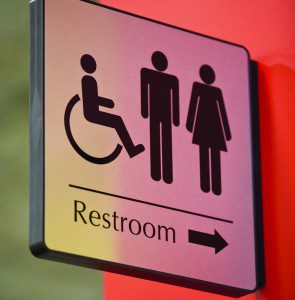By Dr. Sean Castellucci, Urology Partners


Incontinence occurs because of problems with muscles and nerves that help to hold or release urine. The body stores urine – water and wastes removed by the kidneys – in the bladder. The bladder connects to the urethra, the tube through which urine leaves the body. Some people may lose a few drops of urine while running or coughing. Others may feel a strong, sudden urge to urinate just before losing a large amount of urine; many experience both symptoms.
Women experience UI twice as often as men. Pregnancy and childbirth, menopause, and the structure of the female urinary tract account for this difference. Both women and men can become incontinent from neurologic injury, birth defects, stroke, multiple sclerosis, and physical problems associated with aging. A common misconception is that incontinence is inevitable with age. UI is a medical problem with treatments and solutions. No single treatment works for everyone, but many women can find improvement without surgery.
There are various treatment lifestyle changes that can help manage incontinence. Be mindful of limiting your intake of things that tend to act as stimulants for the bladder (carbonated beverages, spicy foods, citrus, alcohol). Smoking and excess weight can cause incontinence; so quit smoking if you do and maintain a healthy weight. Eliminating caffeine intake two to three hours prior to bedtime can reduce incontinence during the night. Also, establish a pattern of voiding every two to three hours to decrease the amount of stored urine in your bladder.
Other treatment options include Botox, Kegel exercises, biofeedback, and tibial nerve stimulation. Botox can also be injected into the bladder wall to increase bladder size and alleviate incontinence associated with uncontrolled frequency. When performed correctly, Kegel exercises rehabilitate the pelvic floor muscles through isometric contractions. Biofeedback uses instrumentation to provide information on how well the bladder is performing to control urgency incontinence, displayed in a form that the patient understands. Biofeedback bladder training plans, generally consist of 45 minute visits for six weeks. Tibial nerve stimulation is another alternative whereby the tibial nerve is stimulated with a tiny needle connected to a low voltage to help manage incontinence.
In addition to the treatment methods discussed above, oftentimes medications are used, especially in those with urgency and frequency of urination. Stress incontinence (loss of urine with activity) is surgically corrected with outpatient 20-minute surgeries that use small incisions. These surgeries, known as “sling” procedures, utilize revolutionary artificial support tapes that compress and support the urethra to prevent leakage. Patients often resume normal activities in less than one week in most cases.
Injection therapy using bulking agents or Botox is another option available, as well as sacral nerve stimulation. All treatment options need to be discussed with your urologist to determine which would be the best for you.
If you are suffering from urinary incontinence or overactive bladder, please call Urology Partners at 941-792-0340 today. Don’t spend another day on the sidelines, letting life pass you by. You can successfully manage and treat your condition and get back in the game of life!
Dr. Sean A. Castellucci
Dr. Sean Castellucci earned his medical degree from the Philadelphia College of Osteopathic Medicine in Philadelphia, Pennsylvania. He completed his clinical internship at Mercy Catholic Medical Center in General Surgery followed by a general surgery and urologic surgical residency at Albert Einstein Medical Center, and Hahnemann University Hospital, where he was chief resident. Dr. Castellucci has also completed a clinical externship at Memorial Sloane Kettering Oncology Center during his residency. His most recent position was at the Urology Center of Columbus in Columbus, Georgia where he served as Medical Director.
Dr. Castellucci is interested in all aspects of Urology services and research. His specialties are in: Erectile Dysfunction, Bladder Cancer, Prostate Cancer, Kidney Stones, Female Pelvic Organ Prolapse Repair, Kidney Cancer, Low Testosterone, Urinary Incontinence, and minimally invasive therapies including laparoscopic surgery and the utilization of DaVinci Robotics.
Dr. Castellucci is very involved in research which has earned him both national and international recognition, including many publications in peer reviewed journals. His investigations focused on new innovations in urologic, oncologic surgery including the first single port access laparoscopic adrenalectomy performed; as well as research in other fields of urology including prostate cancer.
He has presented at numerous, internationally recognized meetings including the American Urologic Association, the European Association of Urology, and the World Congress of Endourology. His research has also earned him various distinguished awards including the Robert C. Erwin literary award, as well as the Leonard Finkelstein award in Urology.
Dr. Castellucci’s diverse professional interests and responsibilities have enhanced and complimented his role as both husband and father. He is happily married to his wife Dania and has two children; Madison and Hailey.
 Southwest Florida's Health and Wellness Magazine Health and Wellness Articles
Southwest Florida's Health and Wellness Magazine Health and Wellness Articles

